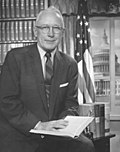Representative Party Term Cong Election history Location District created March 4, 1847 William Thompson (Mount Pleasant ) Democratic March 4, 1847 – 30th 31st Elected in 1846 .Re-elected in 1848 . [ 6] 1847–1849 [ data missing ] 1849–1859 [ data missing ] Vacant June 29, 1850 – 31st Daniel F. Miller (Fort Madison ) Whig December 20, 1850 – Elected to finish Thompson's term . Bernhart Henn (Fairfield ) Democratic March 4, 1851 – 32nd 33rd Elected in 1850 .Re-elected in 1852 .run for U.S. senator . Augustus Hall (Keosauqua ) Democratic March 4, 1855 – 34th Elected in 1854 . Samuel Curtis (Keokuk ) Republican March 4, 1857 – 35th 36th 37th Elected in 1856 .Re-elected in 1858 .Re-elected in 1860 .colonel in the 2nd Iowa Volunteer Infantry Regiment . 1859–1863 [ data missing ] Vacant August 4, 1861 – 37th James F. Wilson (Fairfield ) Republican October 8, 1861 – 37th 38th 39th 40th Elected to finish Curtis's term .Re-elected in 1862 .Re-elected in 1864 .Re-elected in 1866 . 1863–1873 [ data missing ] George W. McCrary (Keokuk ) Republican March 4, 1869 – 41st 42nd 43rd 44th Elected in 1868 .Re-elected in 1870 .Re-elected in 1872 .Re-elected in 1874 . 1873–1933 Des Moines , Henry , Jefferson , Lee , Louisa , Van Buren , and Washington counties Joseph C. Stone (Burlington ) Republican March 4, 1877 – 45th Elected in 1876 . Moses A. McCoid (Fairfield ) Republican March 4, 1879 – 46th 47th 48th Elected in 1878 .Re-elected in 1880 .Re-elected in 1882 . Benton J. Hall (Burlington ) Democratic March 4, 1885 – 49th Elected in 1884 . John H. Gear (Burlington ) Republican March 4, 1887 – 50th 51st Elected in 1886 .Re-elected in 1888 . John J. Seerley (Burlington ) Democratic March 4, 1891 – 52nd Elected in 1890 . John H. Gear (Burlington ) Republican March 4, 1893 – 53rd Elected in 1892 .run for U.S. Senator . Samuel M. Clark (Keokuk ) Republican March 4, 1895 – 54th 55th Elected in 1894 .Re-elected in 1896 . Thomas Hedge (Burlington ) Republican March 4, 1899 – 56th 57th 58th 59th Elected in 1898 .Re-elected in 1900 .Re-elected in 1902 .Re-elected in 1904 . Charles A. Kennedy (Montrose ) Republican March 4, 1907 – 60th 61st 62nd 63rd 64th 65th 66th Elected in 1906 .Re-elected in 1908 .Re-elected in 1910 .Re-elected in 1912 .Re-elected in 1914 .Re-elected in 1916 .Re-elected in 1918 . William F. Kopp (Mount Pleasant ) Republican March 4, 1921 – 67th 68th 69th 70th 71st 72nd Elected in 1920 .Re-elected in 1922 .Re-elected in 1924 .Re-elected in 1926 .Re-elected in 1928 .Re-elected in 1930 . Edward C. Eicher (Washington ) Democratic March 4, 1933 – 73rd 74th 75th Re-elected in 1932 .Re-elected in 1934 .Re-elected in 1936 .Securities and Exchange Commission . 1933–1943 [ data missing ] Vacant December 2, 1938 – 75th Thomas E. Martin (Iowa City ) Republican January 3, 1939 – 76th 77th 78th 79th 80th 81st 82nd 83rd Elected in 1938 .Re-elected in 1940 .Re-elected in 1942 .Re-elected in 1944 .Re-elected in 1946 .Re-elected in 1948 .Re-elected in 1950 .Re-elected in 1952 .run for U.S. Senator . 1943–1963 [ data missing ] Fred Schwengel (Davenport ) Republican January 3, 1955 – 84th 85th 86th 87th 88th Elected in 1954 .Re-elected in 1956 .Re-elected in 1958 .Re-elected in 1960 .Re-elected in 1962 . 1963–1973 [ data missing ] John R. Schmidhauser (Iowa City ) Democratic January 3, 1965 – 89th Elected in 1964 . Fred Schwengel (Davenport ) Republican January 3, 1967 – 90th 91st 92nd Elected in 1966 .Re-elected in 1968 .Re-elected in 1970 . Edward Mezvinsky (Iowa City ) Democratic January 3, 1973 – 93rd 94th Elected in 1972 .Re-elected in 1974 . 1973–1983 [ data missing ] Jim Leach (Davenport ) Republican January 3, 1977 – 95th 96th 97th 98th 99th 100th 101st 102nd 103rd 104th 105th 106th 107th Elected in 1976 .Re-elected in 1978 .Re-elected in 1980 .Re-elected in 1982 .Re-elected in 1984 .Re-elected in 1986 .Re-elected in 1988 .Re-elected in 1990 .Re-elected in 1992 .Re-elected in 1994 .Re-elected in 1996 .Re-elected in 1998 .Re-elected in 2000 .Redistricted to the 2nd district . 1983–1993 [ data missing ] 1993–2003 [ data missing ] Jim Nussle (Manchester ) Republican January 3, 2003 – 108th 109th Redistricted from the 2nd district and re-elected in 2002 .Re-elected in 2004 .run for Governor . 2003–2013 Bruce Braley (Waterloo ) Democratic January 3, 2007 – 110th 111th 112th 113th Elected in 2006 .Re-elected in 2008 .Re-elected in 2010 .Re-elected in 2012 .run for U.S. senator . 2013–2023 Rod Blum (Dubuque ) Republican January 3, 2015 – 114th 115th Elected in 2014 .Re-elected in 2016 . Abby Finkenauer (Dubuque ) Democratic January 3, 2019 – 116th Elected in 2018 . Ashley Hinson (Marion )
Republican January 3, 2021 – 117th Elected in 2020 . 2nd district .
Mariannette Miller-Meeks (Davenport ) Republican January 3, 2023 – 118th 119th Redistricted from the 2nd district and re-elected in 2022 . Re-elected in 2024 . 2023–present : 



































